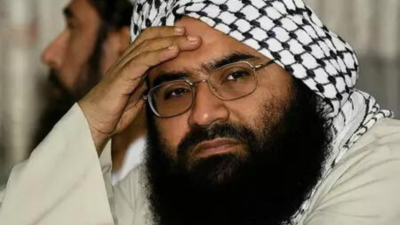ARTICLE AD BOX

Jaish-e-Mohammad's chief Masood Azhar (File photo)
Jaish-e-Mohammad’s top commander Masood Ilyas Kashmiri appeared in a video admitting that the counterterror strike under Operation Sindoor tore the family members of the group’s chief, Maulana Masood Azhar, into pieces.In the viral clip circulating on social media, Ilyas said, “In defending this land, we embraced militancy and fought in Delhi, Kabul and Kandahar to protect its borders. After giving everything, on May 7, Indian forces struck in Bahawalpur, tearing apart the family of Maulana Masood Azhar.”
The video shows Ilyas speaking in a high-pitched tone into a microphone, with several gun-wielding security personnel standing in the background.
JeM's HQ in Bahawalpur
Situated on NH-5 (the Karachi–Torkham Highway) in Bahawalpur, Punjab province, the Markaz functioned as the operational headquarters of Jaish-e-Mohammad. More than a dozen major terror attacks, including the 2019 Pulwama strike, were planned at this site. The Pulwama attackers were also trained here. The facility has housed over 600 cadres and regularly hosted training sessions for JeM members.Ilyas’ remarks refer to Operation Sindoor launched on May 7, a major retaliatory military action following the Pahalgam terror attack. The strike was aimed at terror infrastructure backed and sponsored by Pakistan.
On April 22, in Jammu and Kashmir’s Pahalgam, a Lashkar-e-Taiba wing carried out a brutal attack on tourists in the scenic Baisaran Valley, killing 26 civilians. This was one of the deadliest terror strikes in India in recent years.India’s military response targeted nine major terror hubs across Pakistan and Pakistan-occupied Kashmir. This included Jaish-e-Mohammad’s headquarters in Bahawalpur and Lashkar-e-Taiba’s headquarters in Muridke, among other key installations.
Each of these centers accused of harbouring anti-India terror was blown to bits by Indian armed forces.Following the strikes, Pakistan responded with drones and missiles on consecutive nights. These were intercepted and neutralised by India’s air defence systems, preventing loss of life or damage to property on the Indian side.India then carried out further precision strikes on Pakistan’s air infrastructure, targeting some of its most important bases, including Nur Khan Airbase and Rahim Yar Khan Airbase. These strikes marked the second wave of Indian retaliation and signalled a sharp escalation after the Pahalgam attack.



.png)
.png)
.png)
















 2 hours ago
3
2 hours ago
3









 English (US) ·
English (US) ·